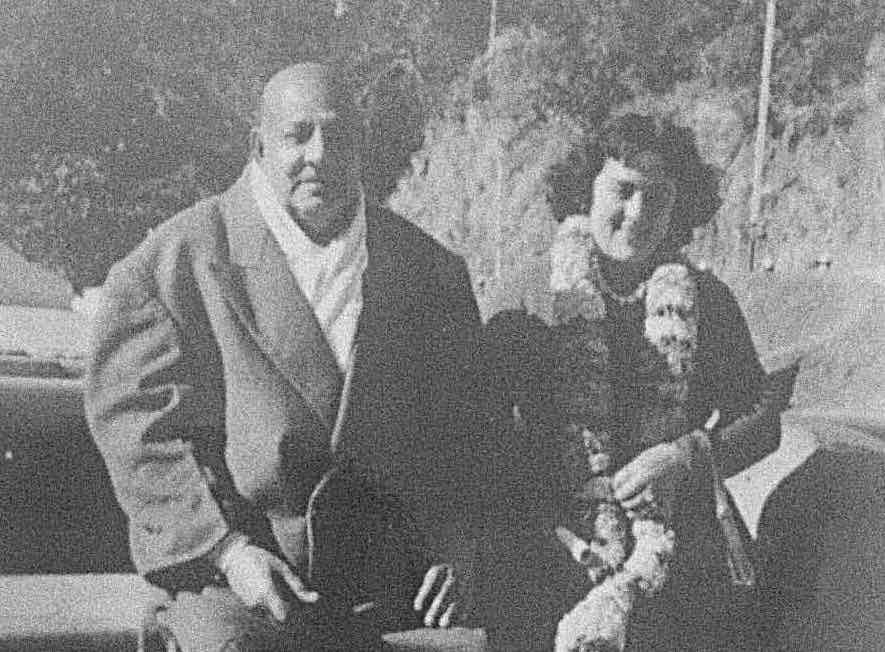




The ashram is where tapasya is practised. The ashram gives knowledge. It is run by a group of sadhaks (aspirants) who are lifetime practitioners of yoga
When Sivananda (as Dr Kuppuswami) first went to Malaya (1913) he noticed that the menfolk of the Indian community were mainly interested in 'women, wine and tobacco'. He did not socialise with them, instead he focused on his medical career and serving the sick and the needy. In 1918 the 'Spanish Flu' struck, killing millions of people worldwide, whilst he was working in Malaya (where there appears to have been at least 36,000 deaths). By the time he returned to India (1923) the desire for sannyas (renunciation) was complete. He had seen enough of the world and its temptations and suffering.
An English lady by the name of Hilary Perry-Keene lived at the Sivananda Ashram, Rishikesh, for about 6 years (from 1956) whilst her husband was working as a pilot in India. She spoke highly of the magnanimity of Sri Swami Sivananda and his work. She and her husband later came to Cairns Australia to help spread the message of Sivananda.
Swami Sivananda had already written: 'Gurudom has become a thriving business' and 'the aspirant wants to become a guru before being a disciple'. Some of the male swamis had not spent enough time under the tutelage of Sivananda, who knew that it was best to stay in one place and practise rigorous sadhana in order to bring the restless mind under control. He did not want the title of 'Guru maharaj' or anything like that, and requested he be addressed simply as 'Sivananda'. Of course, devotees used to worship his feet and garland him with flowers. He allowed them, so as not to discourage them. Afterwards he used to retreat to his room and beat himself over the head with his shoe forty times saying; 'O Mind, does this feel as good as the garlands of flowers and praises of devotees?'.
Sivananda wrote: 'Building Ashrams and making disciples brings about the downfall of the aspirant. They are also stumbling-blocks in the path of God-Realisation. The aspirant becomes another sort of householder. He develops institutional egoism. He gets attached to the Ashram and disciples'.

Yoga is not like a period of work, allowing for the later reward of a nice vacation. Neither is it like a plaything which can be made easy and attractive to all.
The path of yoga involves a series of rigorous steps which cannot be modified without the system becoming ineffective. It was not meant for all. Not everyone seeks perfection.
It is clear that most of the Indian gurus who came to the West were immediately corrupted by the social liberalism of Western society. This is why in proper ashrams under the Gurukula system, one does not become a swami until much later in life. For most people, it is necessary to live a householder life first, before taking renunciation. The desire for family life needs to be worked out first.
Ladies lack the spirit of renunciation. They have not got the same faculties as men have. Hence many Yoginis do not crop up amongst ladies. Ladies can have Darshan of the Lord easily, as they have ingrained love and devotion in them. They are naturally inclined towards bhakti (devotion) and karma yoga (selfless service). Certain undeveloped swamis from India made it possible for women to teach yoga because of the desire to attract more followers, often for their own selfish motives. Male and female aspirants should be in separate spiritual institutions in order to avoid sexual relationships.
Mind quickly takes advantage of the least sign of weakness in the aspirant. It is like a tiger crouching and about to spring on its prey. It is not a question of being pure or impure. The very proximity of people of opposite sex is risky, however pure and well-meaning those involved may be. Moving with women unleashes a primitive force quite beyond the easy control of a human being. The woman herself may be spotless, but the power of Maya may work through her unawares. The hidden power of lust in man begins to manifest in a woman’s presence.
In India, the ancient spiritual heritage has undergone a decline due to the misinterpretation of the scriptures by a class of Pundits and ignorant swamis who have thrived on the faith and religious zeal of their fellow citizens. In the West also, modern man has used the popularity of the ancient yoga system for material gain.
The spirit of renunciation is an important foundation for the practise of yoga, and also the proper functioning of society. It cuts out selfishness, greed and cruelty. It fosters social equality, compassion and the spirit of service. Renunciation is strength.
The good that is done is not always remembered, whilst a smal error committed is never forgotten
In this Kali Yuga anybody can be a guru. One who teaches yoga exercises is not necessarily a guru.
When one has pride in the beginning, the guru will help to erase such lower qualities. Do not think you can go to a guru with the idea you can take and run. This is the downfall of many practitioners of yoga.
The yoga exercises (asanas) are only a small portion of the yoga practice which are to help lift the consciousness.
The purpose of yoga is to detach and attach. Detach from the world, and attach to the Supreme. If you multiply attachments, this will multiply the sources of future pain. Correct your faults and defects.
You have had many children, many fathers, mothers, brothers, sisters, aunties and uncles in previous lives. Grieve not for the living, nor for the dead. The Soul is Immortal.
Detach from the world, and attach to the Supreme
When one takes to the practice of yoga with the thought of practising for the purpose of changing oneself, all the lower qualities are overcome quickly. On the other hand, when a person takes to the practice with other motives, the practice becomes fruitless.
One must first be a disciple before becoming a guru. One cannot expect to do a six week yoga training course and expect to be a guru.
The real seeker, or practitioner of yoga, is represented by Radha. Krishna, the Infinite Being, is represented by the guru.
Someone who reads this and takes to the practice of yoga for changing, will see these things clearly.
Many who get exposed to a true teacher, someone truly wise, tend to keep their distance because of a lack of humility. This is caused by the ego or ‘I-ness’
Man has a brutal instinct, human element and divine ray. It is difficult to curb the brutal instinct, perfect the human element and realise the Divine Ray. It is only achieved through discrimination between the real and the unreal, through dispassion towards the pleasures of the world, and by sincerely following the teachings of a saint and true spiritual teacher.
Man has a brutal instinct, human element and divine ray
When an individual takes to the practice of true yoga for changing the mind, there is no doubt that he or she will get tremendous benefits.
Otherwise it takes longer to reach the goal. To take a ball up a set of steps takes time and energy. However, the ball falls back down very quickly when dropped.
Systematic sadhana or discipline of the body, mind and senses endows one with awareness and practical mindedness. One may read about karma but not understand it due to the turbulent senses which blur the memory and understanding. What is needed is a refined discrimination and logic. What one cannot understand today, can be understood another day, or another year. The opinions of the wise men change as they evolve.
The real teacher of yoga is someone who has tyaga, or spirit of renunciation, and seva, spirit of service. He, or she, is someone who is accustomed to hard work and self sacrifice, and does not merely sit back whilst others do the work. Yoga is not laziness.
The real Guru is someone who is able to dispell the darkness of ignorance within the mind of the spiritual seeker. This is only possible if the Guru himself has overcome ignorance within his own mind through protracted sadhana, self discipline, discrimination and dispassion.
Once the practitioner lays the foundation for spiritual life, and has withdrawn the mind and senses, the process of spiritual evolution surely continues like a river flowing to the sea.
'Abandoning cravings that bind; attaining perfection of mind; delighting in his perfect Self; merges with the Universal Self'.
When one has balance of mind, perfect sense control, and mastery over the passions; when one is neither depressed in pain nor jubilant in gain, and when all the scattered rays of the mind are focused within, one becomes established in meditation. Meditation requires being perfectly established in all the spiritual qualities. Without the establishment of these, meditation does not come spontaneously. Meditation and refinement of mind comes through systematic practise and sustained effort.
A good person will recognize other good people. A spiritually developed person will recognize those who are spiritually developed. When someone whose consciousness has lifted finds a good place of learning, that person should go about the process of learning with humility. Knowledge should never inflate the ego.
A true sannyasi, a rishi or muni, gives the society an opportunity to serve them. The society in turn needs to see the true reason for serving. They will get the grace of the sannyasi, who helps them to lift their consciousness.
Sannyas (renunciation) is not in having long hair and beard, nor is it in having a shaved head. These are merely external appearances. True renunciation is 'shaving the mind', which means cutting out egoism, lust, anger, greed, hatred and jealousy. Once these lower qualities have been eradicated from the mind, one is fit for Moksha (Liberation).
Infographic